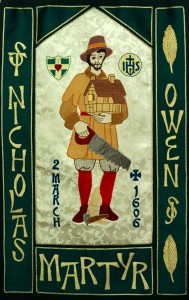On May 3, the Province of Manitoba will have its first change in political party in power as Her Majesty’s Government here since Oct. 5, 1999, when former NDP premier Gary Doer took office. So the arrival of premier-designate Brian Pallister, whose Progressive Conservatives won 40 of the 57 seats in the Manitoba Legislative Assembly in the April 19 provincial general election – tying a record for most seats set way back in 1915 when Premier Tobias Crawford Norris’ Liberals also won 40 seats in the Aug. 6 election in a legislature with 47 seats – is a pretty big deal as these things go.
Actually, for those wont to split hairs, Pallister is not really the premier-designate or premier-elect, some strict constitutional constructionists might argue. It’s just a convenient shorthand journalists in particular use to describe the leader-in-waiting-who-would-be premier (that’s my way-too-long-term). Philippe Lagassé, an associate professor of public and international affairs at the University of Ottawa, and a fellow with the Canadian Global Affairs Institute, whose work focuses on defence policy and the Westminster system, notably on the relationship between Parliament and the Crown, explained it this way last May in the Montreal-based Institute for Research on Public Policy’s digital edition of the magazine Policy Options Politiques: “What should we call the leader of a party who we expect will be appointed premier or prime minister but who doesn’t hold the office yet? … Unfortunately, premier-elect doesn’t make sense, constitutionally speaking, because first ministers aren’t elected.
“Voters elect representatives who sit in legislatures, not first ministers or governments. Nor do legislatures elect first ministers. Premiers and prime ministers are appointed by the Crown. Of course, those appointments are made based on the first minister’s ability to hold the confidence of legislature, but it’s an appointed office nonetheless.
“Premier-elect inaccurately describes how the first minister will come into office.
“The next term that’s used is “premier-designate.” I’m not a fan of this title, since there’s no actual office of premier-designate and I think is needlessly confuses things. That said, the term has been used internally within Canadian executives for administrative purposes for nearly a century, and vice-regal secretariats across the country have decided that it should now be used publicly.
“However, premier-designate is meant to describe a particular circumstance. A party leader is premier-designate only after the Crown has invited them to form a government.
“It’s equally important to note that, after this invitation has been issued, the incumbent premier is still premier. The premier-designate is merely preparing to be appointed premier and to advise the Crown on who should be appointed to ministerial offices.
“The premier-designate only becomes premier after the incumbent premier resigns and the Crown formally appoints the premier-designate as the premier.”
Lagassé concludes, “Unfortunately, there’s no good short hand term that accurately reflects our constitutional realities. As boring as it is, it’s best to simply refer to them as the leader of party X who is expected to be appointed premier or prime minister.” Aside from how the matter of how we should refer to the leader-in-waiting-who-would-be premier, there is also the issue of who’s who in the Order of Precedence for Manitoba even after we begin calling him Premier Brian Pallister sometime on Tuesday. The Order of Precedence for Manitoba is determined by the Federal-Provincial Relations branch within the Manitoba Department of Finance.
A sequential hierarchy, the Order of Precedence for Manitoba is not necessarily an indication of functional importance, if that isn’t too indelicate a way of putting it, but rather an indication of ceremonial or historical relevance, with some overlap, as might be expected, between the functional and the historical and ceremonial. Premier Pallister will be number two on the list, preceded only by Lt.-Gov. Janice Filmon, the wife of Gary Filmon, the last Tory premier of Manitoba until the election of Pallister earlier this month.
Manitoba joined Confederation as the fifth province – appropriately enough smack in the middle of 10, time-wise, as well as geographically – on July 15, 1870. The Manitoba Act, which created the Province of Manitoba, was passed by the Parliament of Canada, and received royal assent on May 12, 1870. Manitoba’s official flag, the Red Ensign, bearing the provincial coat of arms, was given royal approval by Her Majesty Queen Elizabeth II in October 1965, and officially dedicated and unfurled for the first time on May 12, 1966. In 1986, May 12 was designated as Manitoba Day.
Manitoba has been the home of some of the most important, often colourful and eclectic, and at times controversial who’s who of Canadian history. Almost any such list would include Métis leader Louis Riel, considered by many to be the “Founding Father” of Manitoba; Nellie McClung, the controversial feminist author, social activist and politician; writers Gabrielle Roy and Margaret Laurence; J.S. Woodsworth, Methodist minister, community activist and Co-operative Commonwealth Federation (CCF) politician; Los Angeles-born Stanley Knowles, United Church minister, social gospel movement activist, CCF politician and parliamentarian; Progressive Conservative premier and senator Duff Roblin; former governor general and NDP premier Ed Schreyer; Doer, also Canada’s former ambassador to the United States, as well as a former premier; newspaper editor John Wesley Dafoe; journalist E. Cora Hind; and Canwest’s Izzy Asper.
Add filmmaker Guy Maddin; spymaster Sir William Stephenson; cable TV pioneer and philanthropist Randall Moffat; and Olympic speed skater Cindy Klassen, to that list too.
In addition, to the important and famous, there are also the quirky and unique things that make Manitoba, well, Manitoba. Things like the nine “disorganized” municipalities of Armstrong; Birch River; Chatfield; Fisher Branch; Kreuzberg; Piney; Sprague; Stuartburn; and Woodlea, now absorbed into Rural Municipalities (RM’s). When the Depression arrived in the 1930s, municipalities were faced with a sudden drop in tax receipts and many were forced to accept administration from the provincial government. Nine municipalities, located in the Interlake and southeast corner, allowed their government to lapse completely and have never reappeared in their old form. Even rarer than “ghost towns,” these former municipalities are, in effect, “ghost” municipalities, notes the Manitoba Historical Society.
So what makes the Order of Precedence of Manitoba so important? Well, for one thing it, it is useful for determining where dignitaries are seated at formal official dinners hosted by the Keystone Province in the capital of Winnipeg – or by analogy up here in Thompson – figuring out which table should go first and whose at the front of the line at a St. Lawrence Parish Hall social, Kokanee, or rye and Coke, or both in hand, for a midnight lunch of kielbasa, rye bread, Old Dutch barbecue potato chips, dill pickles and cheese.
So yeah, kind of important.
And so, ladies and gentlemen, without further ado, the Order Precedence of Manitoba, after Her Honour, and the premier, whose official title by the way is “president of the executive council of Manitoba,” better known as the premier and his cabinet:
- Chief Justice Richard J.F. Chartier of the Manitoba Court of Appeal;
- Former lieutenant-governors of Manitoba or surviving spouses in order of seniority in taking office;
- Former presidents of the executive council of Manitoba in order of seniority in taking office;
- Members of the Privy Council of Canada resident in Manitoba by order of seniority of taking the oath of office;
- Members of the executive council of the Province of Manitoba in relative order of seniority of appointment;
- Chief Justice of the Court of Queen’s Bench Glenn Joyal;
- The Speaker of the Legislative Assembly of Manitoba;
- The puisne judges of the Manitoba Court of Appeal and of the Court of Queen’s Bench in relative order of seniority of appointment;
- The Leader of the Official Opposition in the Legislative Assembly of Manitoba;
- The Archbishop of St. Boniface, Albert LeGatt;
- The Bishop of Rupert’s Land; Donald Phillips;
- The Archbishop of Winnipeg, Richard Gagnon;
- The Metropolitan of the Ukrainian Orthodox Church;
- The Metropolitan of the Ukrainian Catholic Church:
- The President of the Manitoba Conference of the United Church of Canada;
- The chair of the Manitoba Conference of the Presbyterian Church in Canada;
- The Chair of other representatives persons of the following denominations as indicated below and whose person will be signified to the clerk of the executive council from time to time: Lutheran Church; Jewish Rabbi; The Mennonite Faith; The Baptist Church; The Salvation Army; The Pastors Evangelical Fellowship;
- Members of the House of Commons resident in Manitoba by order of seniority in taking office;
- Members of the legislative assembly of Manitoba in relative order of seniority in taking office;
- Provincial court judges in relative order of seniority of appointment;
- Magistrates in relative order of seniority of appointment;
- Members of the local consular corps in relative order of seniority of appointment;
- Mayors, reeves and elected local government administrators in relative order of date of taking office.
You can also follow me on Twitter at: https://twitter.com/jwbarker22











